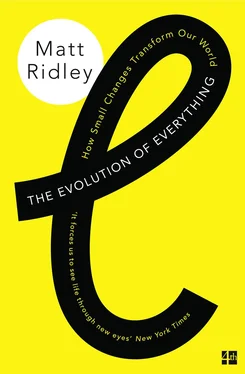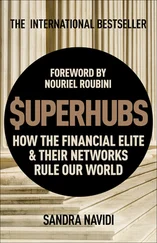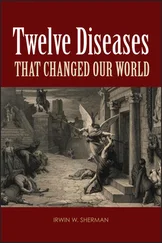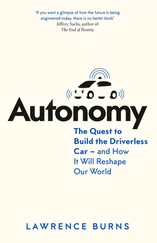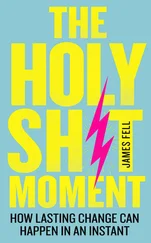If this all seems a bit abstruse, perhaps an analogy will help. The function of the heart, we would surely agree, is to pump blood. That is what natural selection has honed it to do. The heart does other things, such as add to the weight of the body, produce sounds and prevent the pericardium from deflating. Yet to call those the functions of the heart is silly. Likewise, just because junk DNA is sometimes transcribed or altered, that does not mean it has function as far as the body is concerned. In effect, the ENCODE team was arguing that grasshoppers are three times as complex, onions five times and lungfish forty times as complex, as human beings. As the evolutionary biologist Ryan Gregory put it, anyone who thinks he or she can assign a function to every letter in the human genome should be asked why an onion needs a genome that is about five times larger than a person’s.
Who’s resorting to a skyhook here? Not Ohno or Dawkins or Gregory. They are saying the extra DNA just comes about, there not being sufficient selective incentive for the organism to clear out its genomic attic. (Admittedly, the idea of junk in your attic that duplicates itself if you do nothing about it is moderately alarming!) Bacteria, with large populations and brisk competition to grow faster than their rivals, generally do keep their genomes clear of junk. Large organisms do not. Yet there is clearly a yearning that many people have to prefer an explanation that sees the spare DNA as having a purpose for us, not for itself. As Graur puts it, the junk critics have fallen prey to ‘the genomic equivalent of the human propensity to see meaningful patterns in random data’.
Whenever I raised the topic of junk DNA in recent years I was astonished by the vehemence with which I was told by scientists and commentators that I was wrong, that its existence had been disproved. In vain did I point out that on top of the transposons, the genome was littered with ‘pseudogenes’ – rusting hulks of dead genes – not to mention that 96 per cent of the RNA transcribed from genes was discarded before proteins were made from the transcripts (the discards are ‘introns’). Even though some parts of introns and pseudogenes are used in control sequences, it was clear the bulk was just taking up space, its sequence free to change without consequence for the body. Nick Lane argues that even introns are descended from digital parasites, from the period when an archeal cell ingested a bacterium and turned it into the first mitochondrion, only to see its own DNA invaded by selfish DNA sequences from the ingested bacterium: the way introns are spliced out betrays their ancestry as self-splicing introns from bacteria.
Junk DNA reminds us that the genome is built by and for DNA sequences, not by and for the body. The body is an emergent phenomenon consequent upon the competitive survival of DNA sequences, and a means by which the genome perpetuates itself. And though the natural selection that results in evolutionary change is very far from random, the mutations themselves are random. It is a process of blind trial and error.
Even in the heart of genetics labs there is a long tradition of resistance to the idea that mutation is purely random and comes with no intentionality, even if selection is not random. Theories of directed mutation come and go, and many highly reputable scientists embrace them, though the evidence remains elusive. The molecular biologist Gabby Dover, in his book Dear Mr Darwin , tried to explain the implausible fact that some centipedes have 173 body segments without relying exclusively on natural selection. His argument was basically that it was unlikely that a randomly generated 346-legged centipede survived and bred at the expense of one with slightly fewer legs. He thinks some other explanation is needed for how the centipede got its segments. He finds such an explanation in ‘molecular drive’, an idea that remains frustratingly vague in Dover’s book, but has a strong top–down tinge. In the years since Dover put forward the notion, molecular drive has sunk with little trace, following so many other theories of directed mutation into oblivion. And no wonder: if mutation is directed, then there would have to be a director, and we’re back to the problem of how the director came into existence: who directed the director? Whence came this knowledge of the future that endowed a gene with the capacity to plan a sensible mutation?
In medicine, an understanding of evolution at the genomic level is both the problem and the solution. Bacterial resistance to antibiotics, and chemotherapeutic drug resistance within tumours, are both pure Darwinian evolutionary processes: the emergence of survival mechanisms through selection. The use of antibiotics selects for rare mutations in genes in bacteria that enable them to resist the drugs. The emergence of antibiotic resistance is an evolutionary process, and it can only be combated by an evolutionary process. It is no good expecting somebody to invent the perfect antibiotic, and find some way of using it that does not elicit resistance. We are in an arms race with germs, whether we like it or not. The mantra should always be the Red Queen’s (from Lewis Carroll’s Through the Looking-Glass ): ‘Now, here, you see, it takes all the running you can do, to keep in the same place. If you want to get somewhere else, you must run at least twice as fast as that!’ The search for the next antibiotic must begin long before the last one is ineffective.
That, after all, is how the immune system works. It does not just produce the best antibodies it can find; it sets out to experiment and evolve in real time. Human beings cannot expect to rely upon evolving resistance to parasites quickly enough by the selective death of susceptible people, because our generation times are too long. We have to allow evolution within our bodies within days or hours. And this the immune system is designed to achieve. It contains a system for recombining different forms of proteins to increase their diversity and rapidly multiplying whichever antibody suddenly finds itself in action. Moreover, the genome includes a set of genes whose sole aim seems to be to maintain a huge diversity of forms: the major histocompatibility complex. The job of these 240 or so MHC genes is to present antigens from invading pathogens to the immune system so as to elicit an immune response. They are the most variable genes known, with one – HLA-B – coming in about 1,600 different versions in the human population. There is some evidence that many animals go to some lengths to maintain or enhance the variability further, by, for example, seeking out mates with different MHC genes (detected by smell).
If the battle against microbes is a never-ending, evolutionary arms race, then so is the battle against cancer. A cell that turns cancerous and starts to grow into a tumour, then spreads to other parts of the body, has to evolve by genetic selection as it does so. It has to acquire mutations that encourage it to grow and divide; mutations that ignore the instructions to stop growing or commit suicide; mutations that cause blood vessels to grow into the tumour to supply it with nutrients; and mutations that enable cells to break free and migrate. Few of these mutations will be present in the first cancerous cell, but tumours usually acquire another mutation – one that massively rearranges its genome, thus experimenting on a grand scale, as if unconsciously seeking to find a way by trial and error to acquire these needed mutations.
The whole process looks horribly purposeful, and malign. The tumour is ‘trying’ to grow, ‘trying’ to get a blood supply, ‘trying’ to spread. Yet, of course, the actual explanation is emergent: there is competition for resources and space among the many cells in a tumour, and the one cell that acquires the most helpful mutations will win. It is precisely analogous to evolution in a population of creatures. These days, the cancer cells often need another mutation to thrive: one that will outwit the chemotherapy or radiotherapy to which the cancer is subjected. Somewhere in the body, one of the cancer cells happens to acquire a mutation that defeats the drug. As the rest of the cancer dies away, the descendants of this rogue cell gradually begin to multiply, and the cancer returns. Heartbreakingly, this is what happens all too often in the treatment of cancer: initial success followed by eventual failure. It’s an evolutionary arms race.
Читать дальше
